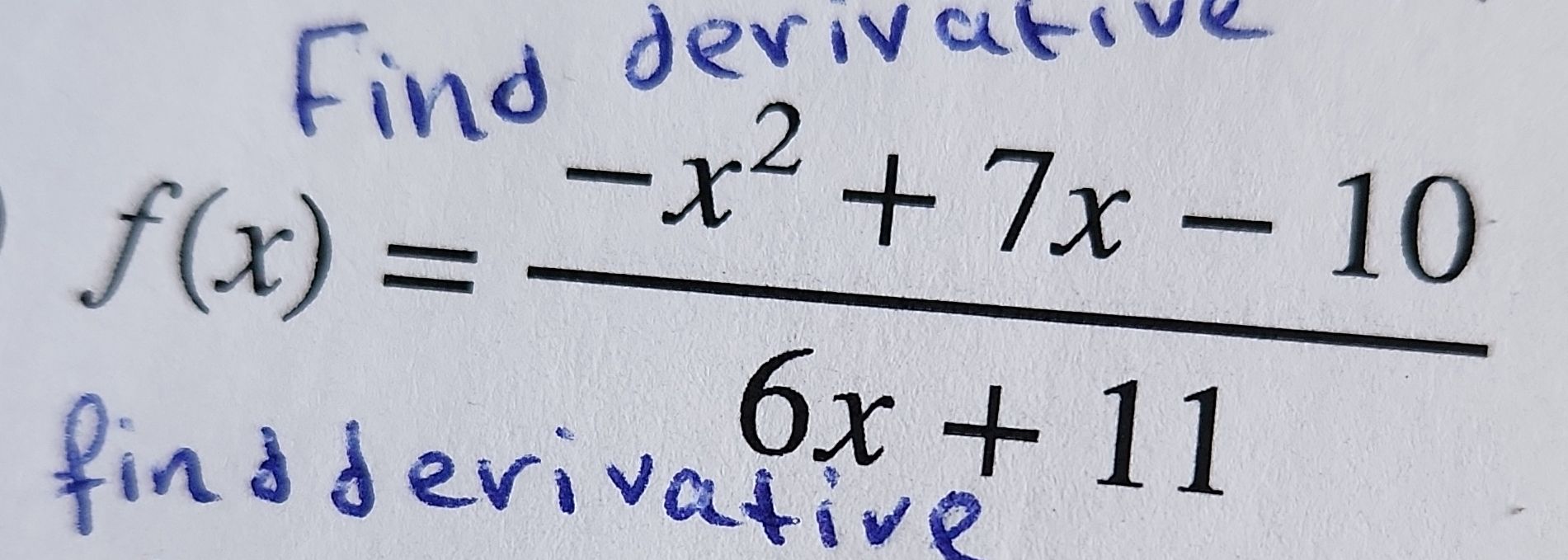AI tutor
Full solution
Q.
- Identify Function and Rule: Identify the function and the rule to use for differentiation.We have a function of the form , where and . To find the derivative of a quotient, we use the quotient rule, which states that .
- Differentiate Numerator: Differentiate the numerator . Using the power rule, the derivative of with respect to is .
- Differentiate Denominator: Differentiate the denominator . Using the power rule and the constant rule, the derivative of with respect to is .
- Apply Quotient Rule: Apply the quotient rule.Now we apply the quotient rule: .Substituting the derivatives we found in Steps and , we get:.
- Expand and Simplify: Expand the numerator and simplify.Expanding the numerator, we get:Simplifying the numerator, we get:
- Check for Simplifications: Check for any possible simplifications. The numerator and the denominator do not have any common factors, so this is the simplified form of the derivative.

